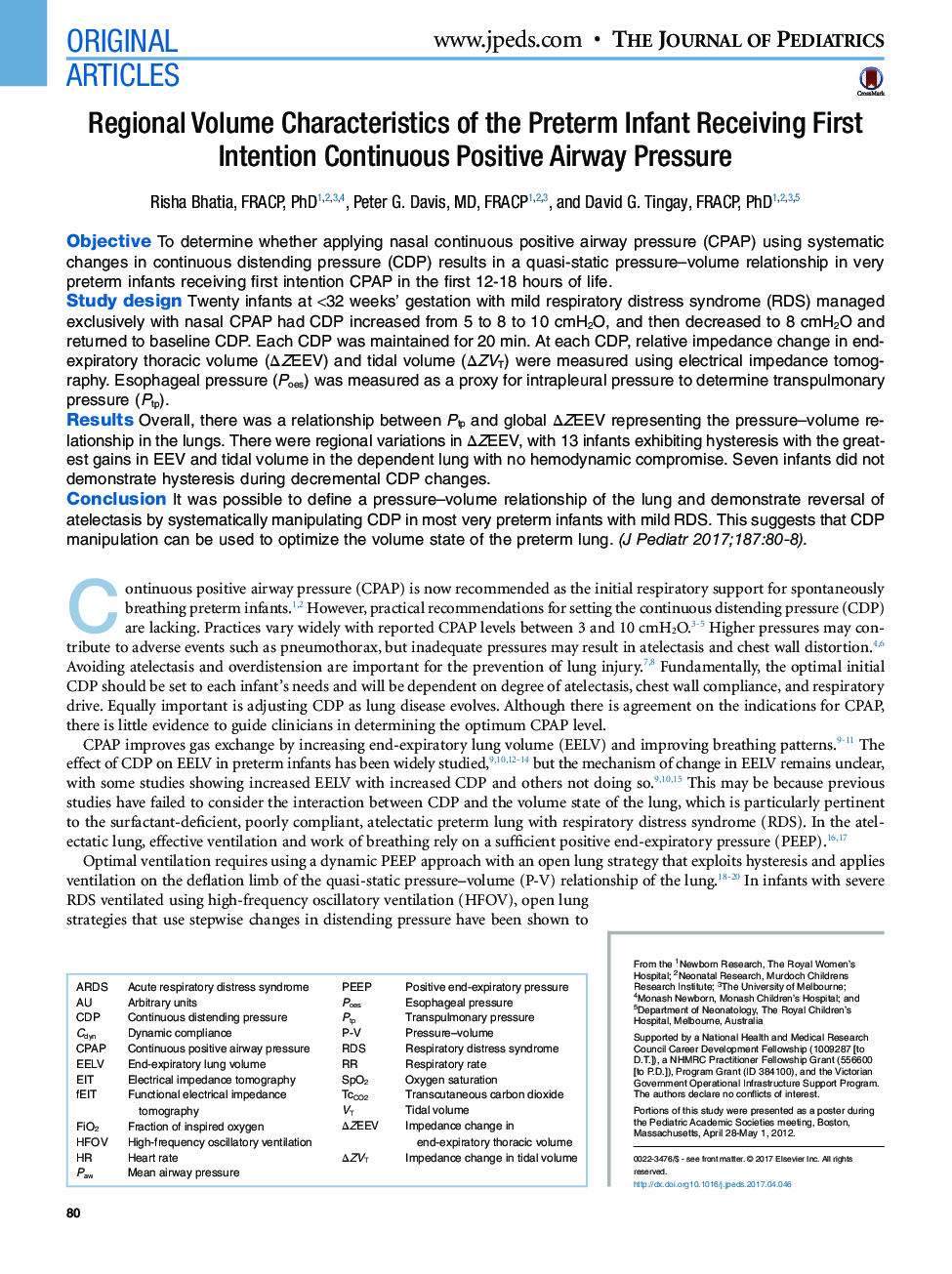| Article ID | Journal | Published Year | Pages | File Type |
|---|---|---|---|---|
| 5719038 | The Journal of Pediatrics | 2017 | 11 Pages |
ObjectiveTo determine whether applying nasal continuous positive airway pressure (CPAP) using systematic changes in continuous distending pressure (CDP) results in a quasi-static pressure-volume relationship in very preterm infants receiving first intention CPAP in the first 12-18 hours of life.Study designTwenty infants at <32 weeks' gestation with mild respiratory distress syndrome (RDS) managed exclusively with nasal CPAP had CDP increased from 5 to 8 to 10 cmH2O, and then decreased to 8 cmH2O and returned to baseline CDP. Each CDP was maintained for 20âmin. At each CDP, relative impedance change in end-expiratory thoracic volume (ÎZEEV) and tidal volume (ÎZVT) were measured using electrical impedance tomography. Esophageal pressure (Poes) was measured as a proxy for intrapleural pressure to determine transpulmonary pressure (Ptp).ResultsOverall, there was a relationship between Ptp and global ÎZEEV representing the pressure-volume relationship in the lungs. There were regional variations in ÎZEEV, with 13 infants exhibiting hysteresis with the greatest gains in EEV and tidal volume in the dependent lung with no hemodynamic compromise. Seven infants did not demonstrate hysteresis during decremental CDP changes.ConclusionIt was possible to define a pressure-volume relationship of the lung and demonstrate reversal of atelectasis by systematically manipulating CDP in most very preterm infants with mild RDS. This suggests that CDP manipulation can be used to optimize the volume state of the preterm lung.
